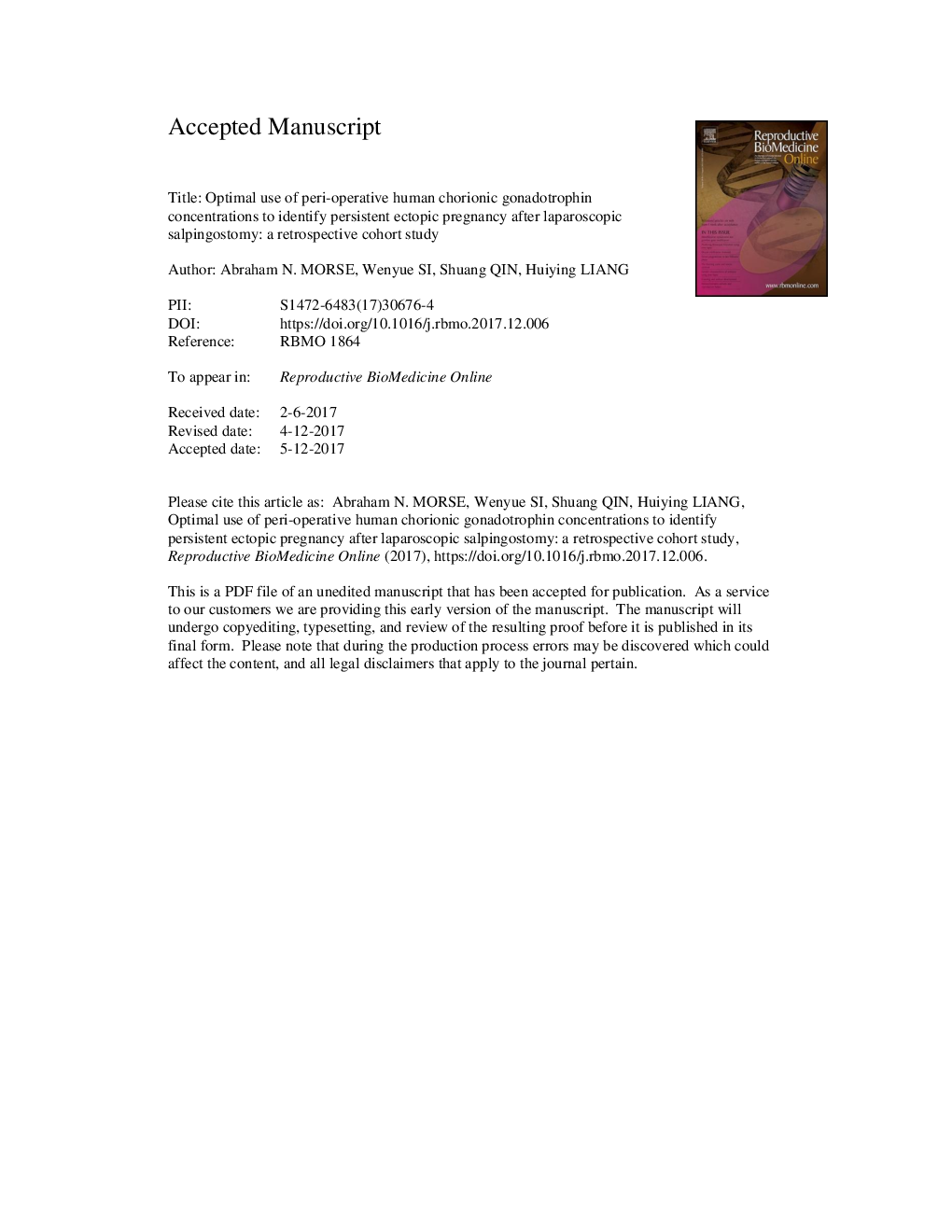| Article ID | Journal | Published Year | Pages | File Type |
|---|---|---|---|---|
| 8783917 | Reproductive BioMedicine Online | 2018 | 23 Pages |
Abstract
The aim of this study was to improve clinical decision-making for the identification of persistent ectopic pregnancy after linear salpingostomy. The study identified 854 laparoscopic salpingostomies performed between 2011 and 2016; 794 had a human chorionic gonadotrophin (HCG) <10 mIU/ml documented in the electronic medical record within 1 month after surgery ('successes'). Sixty (7%) received either methotrexate or repeat surgery for persistent ectopic pregnancy ('failures'). Five hundred and seventeen, including 46 'failures', had two or more immediate post-operative HCG measurements available. The most clinically useful prediction rule was calculated by dividing the difference between the first and second post-operative HCG values by the first post-operative HCG value (i.e. [HCG1 â HCG2]/HCG1). When this ratio exceeded 0.75, it reliably ruled out persistent ectopic with a negative predictive value = 99%. When this ratio was less than 0.2, it identified persistent ectopics with a positive predictive value = 88%. It appears that this simple arithmetic calculation involving two early post-operative HCG values may allow for efficient triage of patients before post-operative day 5. If validated in prospective studies, this could help minimize the risk, inconvenience and expense of requiring several weeks of frequent follow up to rule in/rule out persistent ectopic pregnancy.
Keywords
Related Topics
Health Sciences
Medicine and Dentistry
Obstetrics, Gynecology and Women's Health
Authors
Abraham N. Morse, Wenyue Si, Shuang Qin, Huiying Liang,
